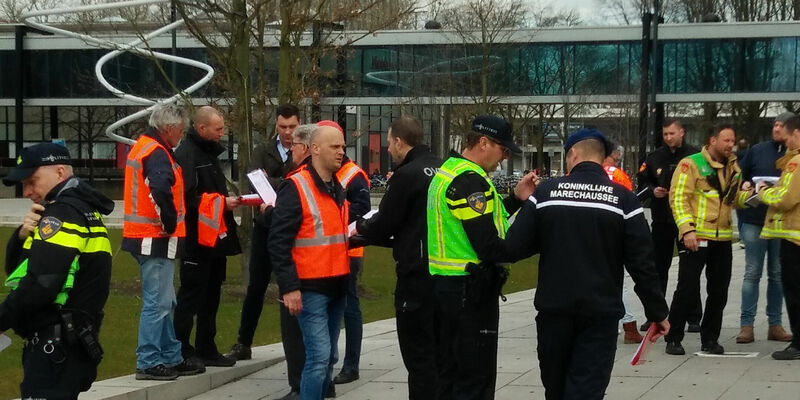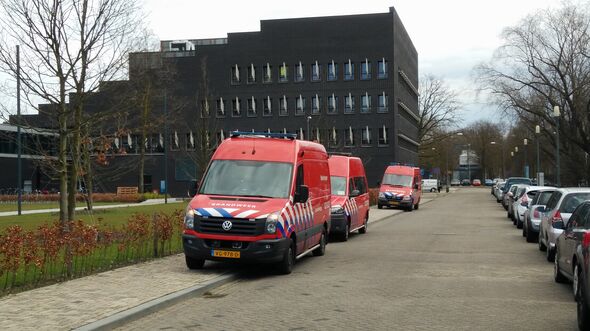
- The University , Campus
- 03/04/2018
Exercise in working with fellow emergency services
Today you might have noticed more vehicles than usual belonging to the fire service, ambulance service, municipality and police force driving to and fro on campus. Their activity is due to this week's joint exercises being conducted by TU/e's safety organization and the external emergency services to test their collaboration. “What in heaven's name does grip two mean?”
The duty officers of the police, fire service and ambulance team of the Southeast Brabant Safety Region and TU/e's Safety & Security department are carrying out joint exercises today, Wednesday and Thursday, focusing in particular on their collaboration and communication. Also participating are the team leaders of TU/e's Emergency Response Team (BHV).
Outside Flux Tuesday afternoon some twenty emergency responders are in discussion. They've just heard that an incident involving an explosion and fire has occurred in the former TNO building. How will they deal with it? BHV team leader at TU/e Peter van Mourik is under pressure when he is torn between wanting to direct his own team and having to attend the meeting of external emergency responders.
Different languages
In the debriefing meeting he says he found the sense of having too little information annoying. “While I was standing there in discussion, I couldn't be in contact with my own people. Nor am I familiar with all the terms they use. Grip two? I've no idea what that means.”
For Peter Bloemers, head of TU/e Safety & Security, such a concrete example is very valuable. “At times, the different emergency services speak different languages. Ambulance staff and police refer to victims, for example, as T1 or T4, terms that encompass such a world of difference that you're either slightly injured or dead. Those of us at TU/e aren't familiar with these terms. And the external responders often have difficulty locating where they need to go. TNO building? Where is that and how do you get there?”
Municipality's role
Marla Ringburg of the municipality's Public Care team is attending these exercises as an observer. She hopes the participants will realize the impact of having so many international students and employees on campus. “As soon as other nationalities are involved, it becomes complex. Victims are homeless in a very real sense and cannot be taken in by a family member or the like.”
An incident on the campus of a university of technology has many other interesting aspects. “When a fire is extinguished in a building and chemicals get into the sewers via the fire-fighting hoses, the municipality has another problem on its plate.”
The municipality provides help to complement TU/e's own efforts. “It would be strange if the municipality were to furnish a sports hall for victims while we have the Student Sports Center here,” says Bloemers.

Discussion